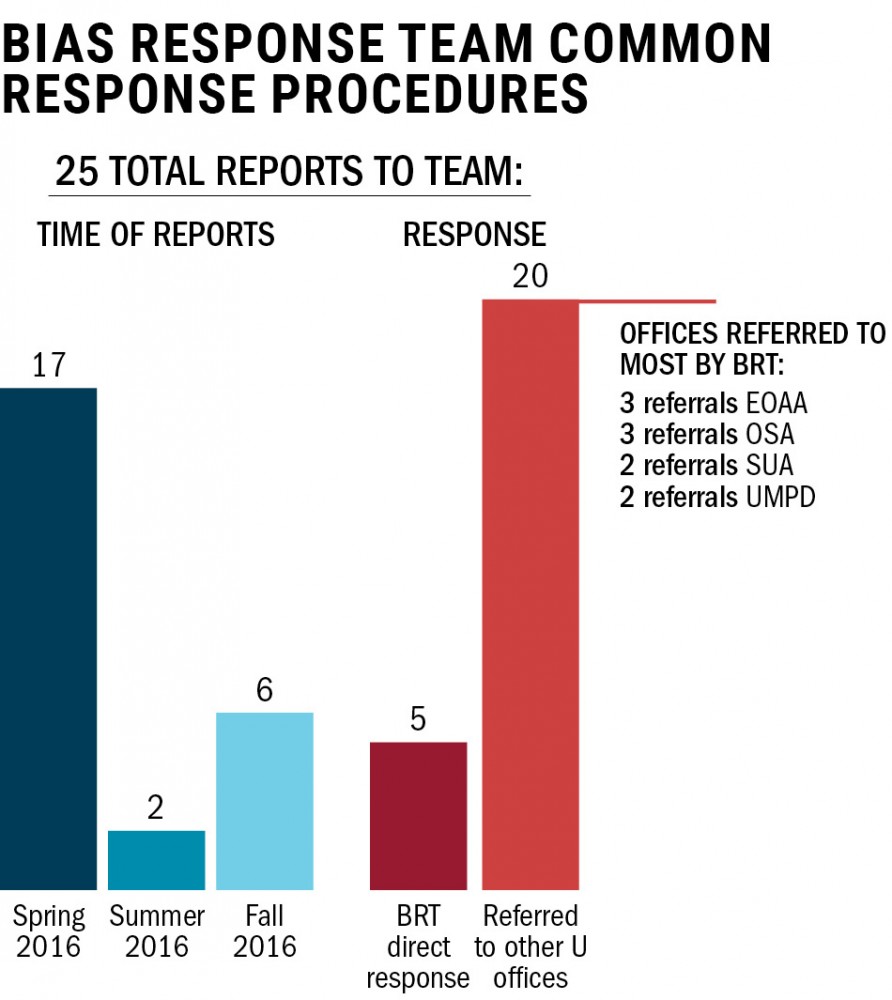The University of Minnesota’s Bias Response Team has responded to 25 incidents ranging from allegedly discriminatory tweets to an instructor allegedly perpetuating stereotypes about Asians since the group was formed last January.
Out of the 25 incidents reported to the team, students and faculty members were referred to other campus offices 20 times and contacted directly by the BRT five times. The reports and responses — which were obtained through a public records request — demonstrate the wide-range of incidents the BRT has responded to.
Other reports pointed out anti-Muslim and anti-Semitic language on flyers, among other complaints.
Last month, a University employee reported that a man made homophobic and transphobic comments in front of a group of students on West Bank. The employee felt threatened and was worried for the safety of those he was speaking to.
In response, the BRT clarified that the University does not censor freedom of expression, but connected the bias reporter to the Transgender Commission and the Gender and Sexuality Center for Queer and Trans Life, according to the emails.
In an incident reported in July, someone emailed the group with frustrations over a lack of transparency from the University of Minnesota Police Department. The reporter felt that neighborhood safety notices only cited the race of a suspect if they were a person of color.
The BRT referred the bias reporter to the UMPD and outlined policies on what identifiers are used in campus crime notices.
The BRT mainly refers bias reporters to other campus services. While the group doesn’t have investigatory powers, some University faculty members worry that its role is too ambiguous or undefined.
“It’s providing information and referrals and notifying individuals of their rights on campus,” said Katie Eichele, director of the University’s Aurora Center and a member of the BRT.
Tina Marisam, assistant director in the office of Equal Opportunity and Affirmative Action and staff lead for the BRT, said the team consistently communicates with offices around the University who help with the incidents.
“In terms of response, it’s important to note that our team doesn’t have [an] … investigative or disciplinary role,” Marisam said. “The kind of responses that our team works with is providing care and support to those that are impacted.”
The team has worked with EOAA, Student Unions and Activities the Office for Student Affairs the most, and in two cases, the University police department, according to the data provided by the University.








